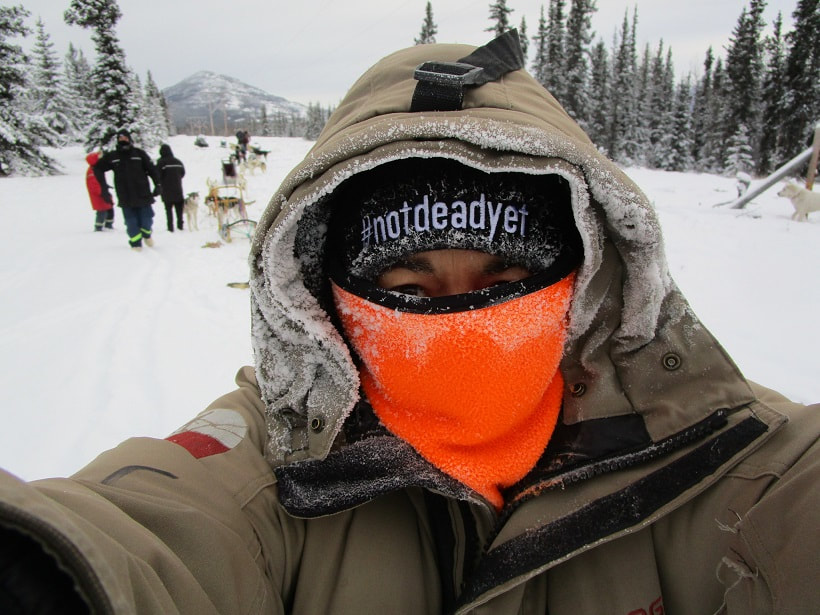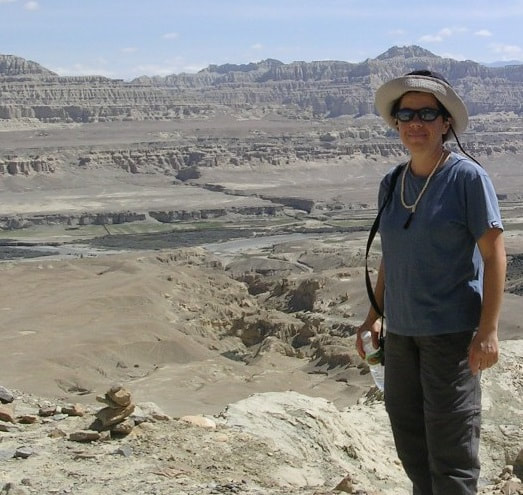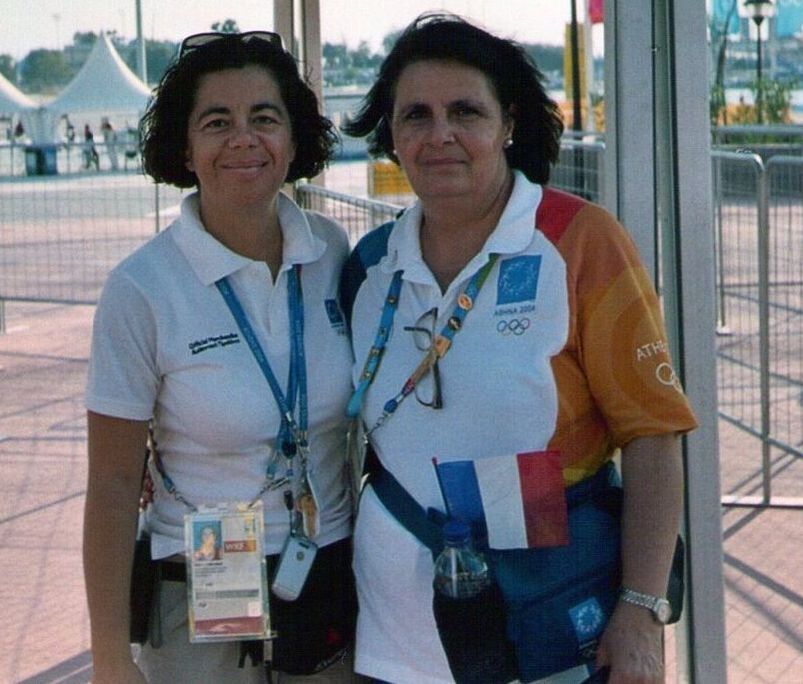|
Hine Hukatere was an adventurous young lass who loved climbing in the mountains and persuaded her lover Wawe to climb with her. Wawe was a less experienced climber, but he faithfully accompanied Hine Hukatere on her hikes, until one day an avalanche swept Wawe to his death. The broken-hearted Hine Hukatere cried and cried; her tears flowed down the mountain and froze to form the glacier, Ka Roimata o Hine Hukatere – the tears of Hine Hukatere. Heavy tear drops continued falling from the sky, as Shaz and I stared disconsolately out the window. Rain was forecast for the next three days and we were literally grounded. The helicopter company had just called to cancel our heli-hike to the top of Fox Glacier on the west coast of New Zealand’s South Island. “We’ll reschedule you for tomorrow’s heli-hike, but we won’t know if we can fly up to the glacier until the morning.” “Well, we could go for a drive,” Shaz suggested. “We can check out Franz Josef Glacier just up the road.” “You drive, and I’ll read you the Maori legend about Hine Hukatere.” Franz Josef town was just as bleak, however, so after consulting our guide book we decided to drive along a dirt road to Gillespie’s Beach on the coast, where it fortunately wasn’t raining, despite the ominous clouds overhead. 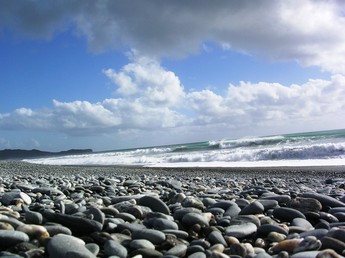 Gillespie's Beach. Image: Hari Kotrotsios. “I’m sorry, but this morning’s trip is also cancelled due to low visibility,” the young lady informed us the next day. The grey skies and persistent rainfall further dampened our mood as each successive tour was cancelled that day; the hike on top of Fox Glacier was meant to be a special treat during a two-week self-drive adventure around the South Island. We had one last chance the following day, as we were due back in Christchurch a few days later for Shaz’s return flight to Australia, while I was scheduled on a flight to Auckland on the North Island. And there’s only so much coffee and cake you can eat when wet weather limits any outdoor activities. “Shaz, why don’t I read you some interesting facts about the glaciers,” I offered as we took shelter from the miserable weather conditions. 13 interesting glacier FAQs • Glaciers are formed by the huge accumulation of snow falling on New Zealand’s Southern Alps. • As each layer of snow is compacted each year, it turns to ice, increasing the glacier’s size and weight. • These rivers of ice slowly flow down the Alps like a conveyor belt. • As the glacier flows over the valley floor, the ice expands and breaks up, forming large crevasses and ice pinnacles. • A glacier retreats when the ice at the bottom melts faster than the amount of snow accumulated at the top. • Franz Josef and Fox glaciers are unique because they descend from the Southern Alps to just 240 metres above sea level among a temperate rainforest. • This unique combination of climate and shape means these two glaciers move about 10 times the speed of other valley glaciers around the world. • At Fox Glacier its huge neve (the snow accumulation area) is 36km square – bigger than the city of Christchurch. • About 30m of snow falls every year on the neve at Fox Glacier, the longest of the awe-inspiring West Coast glaciers, with a length of 13km. • Although Fox has retreated for most of the last 100 years, the glacier has been advancing at an average of about one metre a week since 1985. • The Franz Josef glacier is 12km long and is fed by a 20km square neve. • While Franz Josef retreated several kilometres between the 1940s and 1980s, it entered an advancing phase in 1984 and at times advanced at the phenomenal rate of 70cm a day. • It’s believed that the Fox and Franz Josef glaciers extended into the Tasman Sea about 10,000 to 15,000 years ago, but both are now more than 2.5km shorter than they were a century ago. 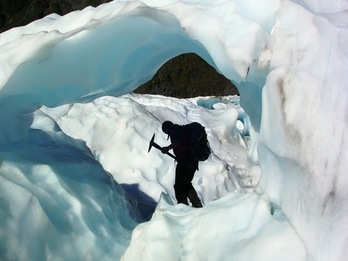 March 2008: Fox Glacier. Image: Hari Kotrotsios “Shaz!” I called, pointing out the window on our last morning, “Look.” Outside, the sun shone brightly against a clear blue sky. “Strap on your crampons! We’re finally going for that hike on the glacier.” An hour later we were airlifted to the top of Fox Glacier where the smooth ice dazzled in the sunlight. We gingerly followed our guide who crushed the ice with a pick axe, giving us better traction with our crampons. “Watch your step,” he cautioned, as the handle of his pick axe plunged through a crack. “Looks like a pretty deep crevasse down there.” We skirted the no-go area and instead marvelled at the blue ice formations. It was the perfect day to be walking on a glacier. Know your glacier terminology
• Ablation zone – where the glacier melts. • Accumulation zone – where the snow collects. • Blue ice – as the accumulation zone or neve snow is compressed by subsequent snowfalls, it becomes firn then blue ice. • Crevasse – cracks in the glacial ice as it crosses obstacles and moves down the mountain. • Dead ice – as the glacier retreats, isolated chunks of ice may be left behind. • Firn – partly compressed snow on the way to becoming glacial ice. • Kettle lake – lake formed by the melt of an area of isolated dead ice. • Moraine – walls of debris formed at the glacier’s sides (lateral moraine) or end (terminal moraine). • Neve – snowfield area where firn is formed. • Terminal – the final ice face at the end of the glacier. What's your most memorable adventure on a perfect day?
0 Comments
Your comment will be posted after it is approved.
Leave a Reply. |
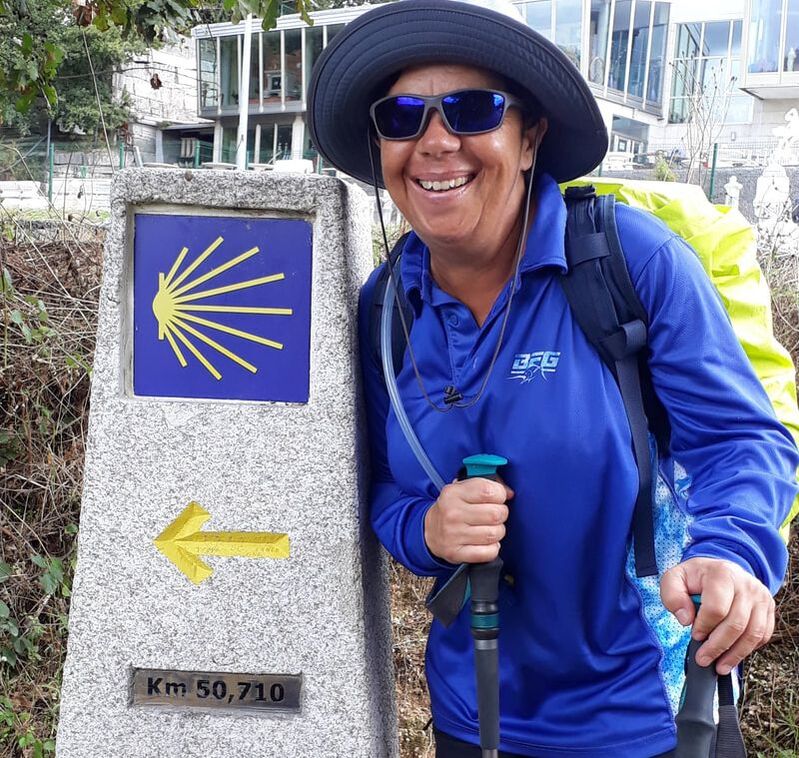 Portuguese Camino 2019 Portuguese Camino 2019
Travel blogs
New Zealand 2008 Tibet 2007 New Zealand 2006 Melbourne 2006 United Kingdom 2004 Athens Olympics 2004 Peru 2003 Beijing to Athens 1994 Nepal 1991 Categories
All
Archives
December 2019
|
|
I acknowledge the traditional Custodians of the land on which I work and live, the Gubbi Gubbi / Kabi Kabi and Joondoburri people, and recognise their continuing connection to land, the waters and sky. I pay my respect to them and their cultures; and to Elders past, present and emerging.
|
© 2024 HARI KOTROTSIOS
|
